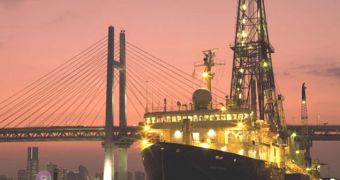For many years, researchers have been proposing that one of the primary reasons for some of the world's most devastating extinction events was the explosion of supervolcanoes. These are massive relatives of their smaller counterparts, and have the ability to release vast amounts of lava, gas and ash around them. One example is the Yellowstone Caldera, which, if it were to blow up, would cover the entire United States in a thick layer of ash, and would cloud the skies for decades.
But, even if these supervolcanoes have been blamed for extinction events, no expert really knows how it is that these very strong and powerful eruptions occur. The mechanisms underlying their action have remained a mystery until recently, when a collaboration of international researchers managed to form a better picture of what went on when one of these structures blew off. The data were collected by an Integrated Ocean Drilling Program (IODP) expedition, which was conducted in the Pacific Ocean. The underwater part of a volcanic chain of islands in Japan was the main target of the research.
The US National Science Foundation (NSF) reports that the investigation took place between September 4 and November 4, 2009, and that it was called IODP Expedition 324: Shatsky Rise Formation. It was conducted aboard the JOIDES Resolution scientific ocean drilling vessel, which was capable of drilling deep under the surface of the ocean, and collect a massive wealth of geological data. The Shatsky Rise volcanic mountain chain is estimated to be about 145 million years old.
“Supervolcanoes' emitted large amounts of gases and particles into the atmosphere, and re-paved the ocean floor. [The result was a massive] loss of species, increased greenhouse gases in the atmosphere, and changes in ocean circulation,” the head of the NSF Division of Ocean Sciences marine geosciences section, Rodey Batiza, says. “Sea floor supervolcanoes are characterized by the eruption of enormous volumes of lava. Studying their formation is critical to understanding the processes of volcanism, and the movement of material from Earth's interior to its surface,” expedition leader and Texas A&M University Professor William Sager explains.

 14 DAY TRIAL //
14 DAY TRIAL //